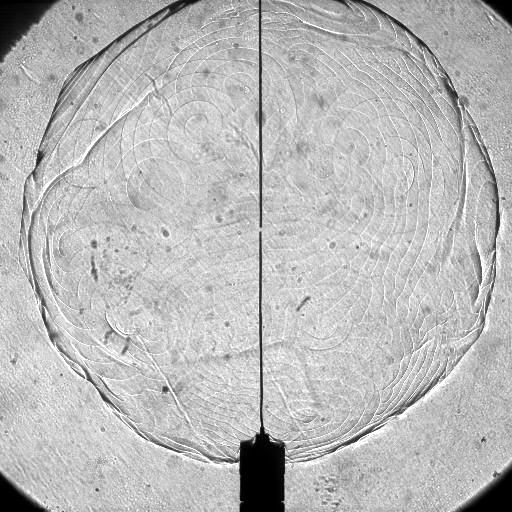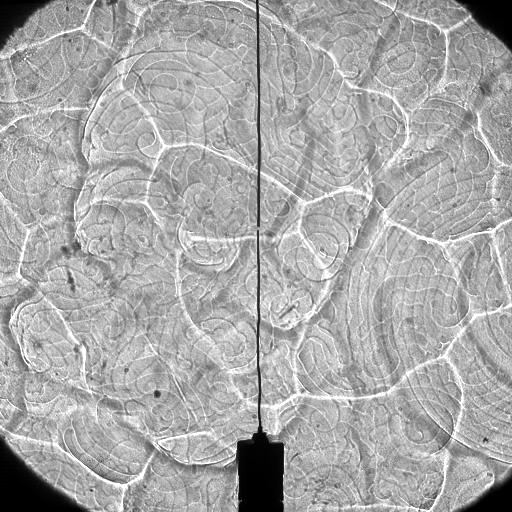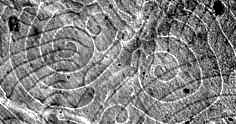 |


|
 |
SPIRAL WAVES OVER PROPAGATING HYDROGEN-AIR FLAMES
G. Jomaas, C. K. Law & J. K. Bechtold*
Princeton University
Spiral waves were recently observed [Ref. 1] over the surface of
outwardly propagating spherical
flames in rich mixtures of hydrogen and air at elevated pressures. The schlieren
photographs shown here were taken with a high-speed video camera at 8,000 fps, for a spark-ignited flame at
20 atmospheres and an equivalence ratio of 4.00. The upper left photo shows the presence of the
spiral waves 20 ms after ignition, when the flame diameter is about 5.1 cm. The dark and
light spirals are located on the hemispherical segments of the flame surface that are
respectively propagating towards and receding from the camera. The lower left photo, taken
37 ms later, shows the development of large cracks of a cellular nature. The bottom right
photo is a magnified image of a pair of counter rotating spirals, whose tips meander and trace
out inward and outward petals in a phenomenon that has also been observed in other
diffusive reactive systems such as the Belousov-Zhabotinskii reaction.
These spiral waves are a manifestation of a diffusive-thermal instability that is relevant for
mixtures with Le >1, where Le is the Lewis number. The parametric regime of their presence
was found to satisfy the Sivashinsky criterion:

where Ze is the Zel'dovich number. The radial velocity of the spiral motion can be more than
an order of magnitude larger than that of the mixture's laminar burning velocity. The large
cells are manifestations of the hydrodynamic, Darrieus-Landau instability, which is promoted
by the reduced flame thickness at high pressures. The spirals also seem to be absorbed at the
boundaries of these hydrodynamic cells.
[1] G. Jomaas, J.K. Bechtold, and C.K. Law "Spiral waves in expanding hydrogen-air
flames: Experiment and theory," Proc. Combust. Inst. 31, in press (2007).
*Department of Mathematical Sciences, New Jersey Institute of Technology.

|
 |